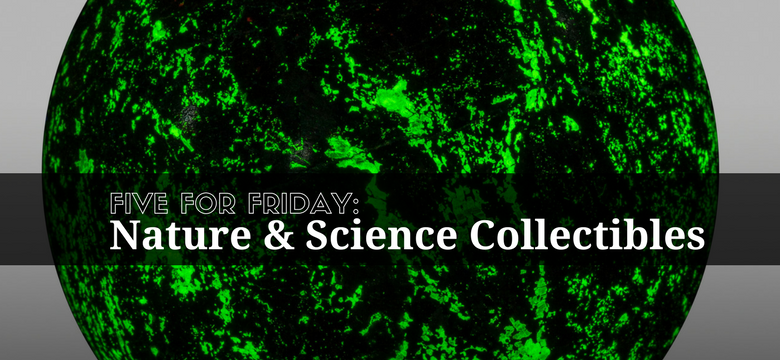
Nature and science auctions, like the one Heritage Auctions will present Nov. 4 in Dallas, are extraordinary opportunities for collectors. Among the available lots are an array of items of immeasurable technological value and others that are so stunning in visual appeal that they forever will alter – or in some cases, dominate – whatever home or office they end up calling home.
But the auction includes an array of choices for collectors operating under a wide array of budgets. This week’s Five for Friday highlights some of the more fascinating lots in the auction.
1. A Dinosaur Tooth (est. $8,000-12,000) from none other than Tyrannosaurus rex, the most well-known of all dinosaurs and arguably the most voracious predator that ever lived. This enormous example, from the Hell Creek Formation in Buffalo, S.D., measures 4-3/4 inches long, and is a “shed” tooth, meaning it was lost during an attack on – or consumption of – another animal.
2. A Dinosaur Brow Horn (est. $7,000-10,000) from the Hell Creek Formation in Jordan County, Montana, is from Triceratops horridus, one of the most identifiable dinosaurs that ever lived. This example, from a bull male, weighs an impressive 25 pounds, has been professionally prepared and comes with a custom metal armature.
3. Meteorite pieces are both fascinating and often gorgeous, and this Muonioanlusta Meteorite Three-Dimensional Cube (est. $4,000-6,000) is both. From a meteorite found in northern Sweden, this stunning example measures about two inches along each edge and showcases the Widmänstatten pattern, featuring interwoven patterns of Kamacite and Taenite banding.
4. Made from one of the most stunning natural elements, this Tiger’s Eye Sculpture (est. $3,000-5,000) comes from Mt. Brockman Station in Western Australia. The organic sculpture exhibits rich contouring sections of deep red hematite and black bands of Magnetite – the characteristic components and colors of classic Australian Tiger’s Eye. Standing 13 inches tall, this beautifully polished example also features green Riebeckite and Goethite, and has been cut on the bottom to allow easy display.
5. A Fluorescent Mineral Sphere (est. $600-800), originally from the Sterling Mine in New Jersey, features swirling arrays of bright green Willemite. When viewed under normal light, it has a nice cut and polish, but when viewed under short-wave ultraviolet light, this orb – with a diameter of 3-1/2 inches – really glows.
Written by: Steve Lansdale







Leave a Comment